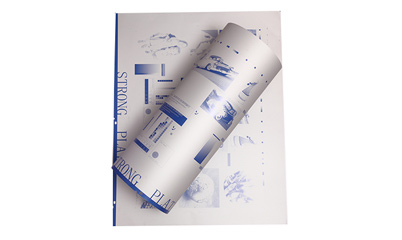Oct 11,2025
If you’re part of the printing sector, you’ve likely come across thermal CTP and violet CTP—but you may not know exactly how they stand apart. Both tools are used to make printing plates, yet their unique traits suit different needs. This article breaks down their key differences clearly, helping you figure out which fits specific printing tasks.

The most significant distinction between thermal CTP and violet CTP comes down to the type of light they use to create images on printing plates.
Thermal CTP uses infrared light as its core. Its printing plate features a unique coating that responds to the high heat emitted by infrared rays; when the light makes contact with this coating, a chemical change occurs, forming the image pattern needed for printing.
Violet CTP operates with violet light—a kind of ultraviolet light that has a specific wavelength. The coating on its plate is sensitive to this violet light, and the reaction takes place at a lower temperature than what’s required for thermal CTP. The light directly modifies the coating to create the print image, no intense heat necessary.
The way each responds to light determines which environments they perform best in.
Thermal CTP plates aren’t sensitive to standard room light. This lets you handle them easily in open workshop areas; there’s no need for special darkrooms or light-tight storage, cutting down on time and streamlining workflow.
Violet CTP plates are more responsive to ambient light—particularly natural sunlight and bright indoor lighting. When not being used, they need darker spaces for handling or light-tight containers. Too much light exposure can damage the plate’s coating, which ruins the print image.
Both deliver high-quality prints, but their key advantages match up with different requirements.
Thermal CTP stands out when it comes to fine details. The precise heat control from infrared light helps produce sharp, high-resolution images—perfect for prints that demand clear text, small graphics, or complex designs, such as high-end magazines or detailed packaging.
Violet CTP speeds up plate exposure. Violet light reacts quickly with the plate’s coating, allowing plates to be produced in less time. This makes it a solid choice for projects with tight deadlines—daily newspapers or quick-turnaround flyers, for example—where speed is more important than ultra-fine detail.
The maintenance requirements for each also differ, which impacts how they’re used over the long term.
Thermal CTP equipment is easier to maintain. Its infrared components are durable and don’t need to be replaced often. The plates themselves are strong, meaning there’s less chance of damage while they’re being stored or handled.
Violet CTP requires more care when it comes to its plates. Because they’re light-sensitive, you have to invest in light-tight storage and handle them quickly to prevent light exposure. The violet light sources in the equipment may also require regular checks to keep performance consistent, adding a small extra layer of upkeep.
In short, thermal CTP and violet CTP differ in the light they use, the environments they need, their printing strengths, and their maintenance needs. Thermal CTP is a strong fit for detailed prints in open spaces, while violet CTP is quicker but requires light-controlled areas.
If you’re searching for reliable CTP solutions that meet different printing needs, our product page features options built for various industry requirements. You can head to the page to find out more about how our CTP products fit with your specific workflow.
GET A QUOTE